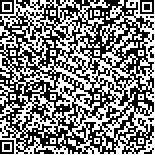| 摘要: |
| [摘要] 目的 探讨多模式神经电生理监测在椎管内占位手术中的应用效果。方法 选择2019年5月至2021年4月安徽医科大学附属合肥医院骨科收治的椎管内占位病变患者45例,根据患者术中接受神经电生理监测的意愿分为观察组(23例)和对照组(22例)。观察组术中采用体感诱发电位(SEP)、运动诱发电位(MEP)和自发肌电图(f-EMG)多模式联合监测,对照组未接受神经电生理监测。比较两组术后椎管内占位切除率、日本骨科协会(JOA)评分、McCormick分级。分析观察组术中多模式神经电生理监测情况及术后神经功能损伤发生情况。结果 观察组椎管内占位切除率高于对照组,差异有统计学意义(91.30% vs 54.55%; χ2=7.770,P=0.001)。两组术后JOA评分均呈上升趋势,且观察组上升幅度更大(P<0.05)。在术后3个月和术后6个月,观察组JOA评分高于对照组,差异有统计学意义(P<0.05)。在术后第3天,两组McCormick分级情况比较差异无统计学意义(P>0.05)。在术后6个月,两组McCormick分级情况均得到改善,观察组McCormick分级情况较对照组更优(P<0.05)。观察组除1例出现监测报警未恢复的患者术后出现神经功能症状加重外,其余22例未出现监测报警或监测报警恢复的患者术后均未发生神经功能损伤的表现。结论 多模式神经电生理监测有助于提高椎管内占位手术的治疗效果和神经功能恢复。 |
| 关键词: 多模式神经电生理监测 椎管内占位 手术 应用效果 |
| DOI:10.3969/j.issn.1674-3806.2022.05.14 |
| 分类号:R 681.5 |
| 基金项目: |
|
| An investigation into the application effect of multi-mode neuroelectrophysiological monitoring in intraspinal space-occupying surgery |
|
WEI Xiao-fei, JIA Qi-yu
|
|
Department of Orthopaedics, Hefei Hospital Affiliated to Anhui Medical University, Hefei 230011, China
|
| Abstract: |
| [Abstract] Objective To investigate the application effect of multi-mode neuroelectrophysiological monitoring in intraspinal space-occupying surgery. Methods Forty-five patients with intraspinal space-occupying lesions who were admitted to Department of Orthopaedics, Hefei Hospital Affiliated to Anhui Medical University from May 2019 to April 2021 were selected, and were divided into an observation group(23 cases) and a control group(22 cases) according to their willingness to receive neuroelectrophysiological monitoring during surgery. In the observation group, somatosensory evoked potential(SEP), motor evoked potential(MEP) and free-run electromyography(f-EMG) were used for multi-modal combined monitoring during the operation, while the control group did not receive neurophysiological monitoring. The postoperative intraspinal space-occupying resection rate, Japanese Orthopaedic Association(JOA) score and McCormick grade were compared between the two groups. The intraoperative multi-mode neuroelectrophysiological monitoring and postoperative neurological damage in the observation group were analyzed. Results The intraspinal space-occupying resection rate in the observation group was higher than that in the control group, and the difference was statistically significant(91.30% vs 54.55%; χ2=7.770, P=0.001). The postoperative JOA scores in both groups showed an upward trend, and the increase was greater in the observation group(P<0.05). The JOA scores of the observation group were higher than those of the control group, and the differences were statistically significant 3 months and 6 months after operation(P<0.05). On the third day after operation, there was no significant difference in the McCormick grading between the two groups(P>0.05). The McCormick grading in both groups was improved, and the McCormick grading in the observation group was better than that in the control group 6 months after operation(P<0.05). In the observation group, except for 1 patient who had a monitoring alarm and did not recover, and his neurological symptoms worsened after surgery, the other 22 patients who did not have a monitoring alarm or recovered from the monitoring alarm did not have neurological damage after surgery. Conclusion Multi-mode nerve electrophysiological monitoring helps to improve the therapeutic effect and nerve function recovery of intraspinal space-occupying surgery. |
| Key words: Multi-mode neuroelectrophysiological monitoring Intraspinal space-occupying Surgery Application effect |

